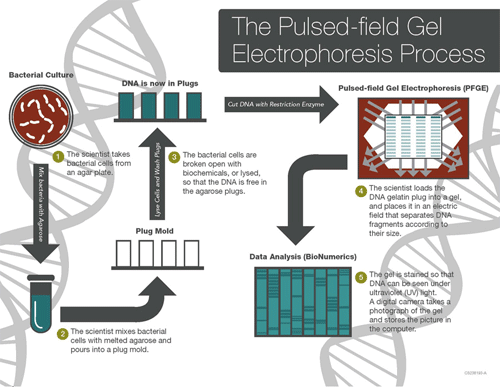In mid September 6 people, including 4 children, in Marin County, Calif., ate something that was contaminated with E. coli O157:H7. Four of these E. coli victims were hospitalized, two of them children who developed hemolytic uremic syndrome (HUS). Both of these children are out of the hospital, but they will have to live with the long-term risks associated with HUS for the duration of their lives, according to Fred Pritzker, a food safety lawyer who represents people in E. coli and HUS in lawsuits against restaurants, food processors and others.
People in three Marin County cities were sickened: Tiburon (3 cases); Inverness (1 case);San Anselmo (1 case); and San Rafael (1 case). The outbreak is still being investigated by County of Marin Health and Human Services and the California Department of Public Health. A specific food source has not been pinpointed, but a local restaurant may be involved.
One tool used in outbreak investigations is pulsed-field gel electrophoresis (PFGE), a process that finds the DNA fingerprint of bacteria. The DNA fragments from bacterial cells are separated according to size in a gel that is stained so that the DNA can be seen under UV light. This is the fingerprint. If two fingerprints match or are very similar, it is likely that they came from the same source. The PFGE process is explained in the CDC infographic below.





